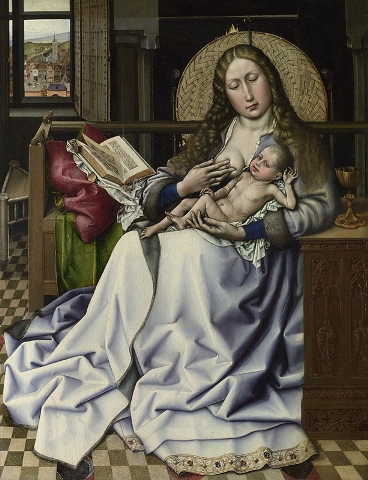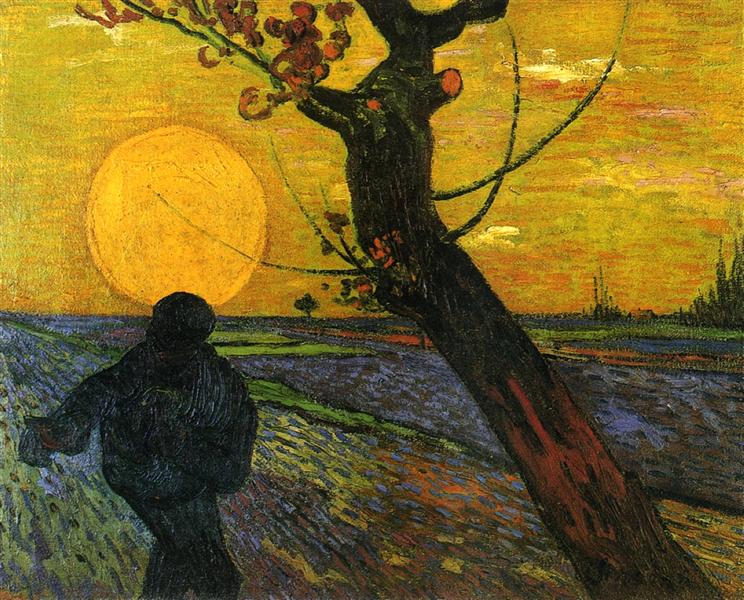Rembrandt - VM - James Romaine
Rembrandt: The Adoration of the Shepherds
.jpg)
O Come Let us Adore Him
by James Romaine
This print by Rembrandt van Rijn is entitled The Adoration of the Shepherds. However, a careful study of the image reveals a curious absence of sheep. Could this omission be an oversight? But Rembrandt is better known for his nuanced and thoughtful depictions of sacred subjects than for his artistic inattention. Rather than dismissing this simply as an accidental inaccuracy, the absence of sheep could, in fact, be a reward for the careful and thoughtful viewer. Perhaps Rembrandt is offering the more observant viewer an insight into his own artistic purpose.
In any case, Rembrandt’s break with the traditional iconography of lamb-bearing shepherds encourages the viewer to rethink this print’s potential subject. His emphasis is not on a depiction of a narrative drama but rather on the cultivation of the viewer’s own spiritual devotion. In a depiction of a narrative drama, such as the arrival of shepherds with sheep, the viewer is an outside observer of someone else’s piety. Instead, the subject of this print by Rembrandt, regardless of its title, is the revelation of the sacred in the forms of ordinary life and, furthermore, the impact of that revelation. A reoccurring theme in Rembrandt’s art is the power of sight to inform faith. These peasants are spiritually transformed by what they see. And Rembrandt’s print might, similarly, inform and inspire the viewer.
A group of peasants gather to see the infant Christ. As the humble visitors arrive, Joseph rises from an overturned wheelbarrow to welcome them as honored guests. Rembrandt has compositionally balanced the figures at the left with two cows on the right. As a result, the holy family is compositionally central.
For the men, women, and at least one child, who lean in to get a closer look, the sight of this sleeping baby is a revelation of disguised glory. At the recognition of Christ as God incarnate, one man removes his hat in realization that he is in the presence of the sacred. Furthermore, the structure of Rembrandt’s composition draws the viewer’s own spiritual imagination into the light that is this resting child’s divine radiance.
Perhaps the most dramatic actor in this image is not a person but rather light itself. Rembrandt’s method synthesizes natural light and sacred light. There is a lamp on the wall that both illuminates and casts shadows. But the shadowless figure of Christ has its own radiance. This light, both natural and supernatural, creates a sort of halo around the center of Rembrandt’s design.
Rembrandt’s composition forms a halo around Mary and Christ. There a line, a line that is sometimes present and sometimes implied, that encircles the Virgin and child. This line connects the standing man at the left, through the arching line of the stable, with the figure of Joseph at the right. This line continues across the bottom of the composition. The presence of this circle is further accentuated by the fact that it encircles and defines the lightest part of the composition.
Notably, this halo of sacred light is inclusive of more than just Mary and Christ. It also includes Joseph. And it even envelopes several others. Rembrandt’s placement of these common people within the halo, might be read as a visualization of their spiritual transformation. In this moment, as they see, recognize, and adore Christ, these so-called shepherds are enfolded into a realm of the transcendent.

In this print, Rembrandt participates in a Netherlandish tradition of employing disguised halos. In a 15th-century painting that has been attributed to either Robert Campin or a follower of him, the Virgin and child sit in a contemporary room. But the firescreen behind them evokes a halo. This ordinary space is transformed, by the incarnation, into a domestic sanctuary.
In the 19th century Vincent van Gogh painted a sower with a sun setting behind him. The sun forms a halo around the head of this peasant farmer. If the halo is a designation of the holy, Vincent’s painting visualizes the permeation of the sacred throughout the most humble and marginalized corners of God’s creation.

Rembrandt’s 17th-century print is situated at a historical midpoint between Campin and Vincent. Within this Netherlandish tradition of employing everyday motifs as halos, Rembrandt is both a receiver and a transmitter; he is both heir and inspiration.
Through Rembrandt’s print the viewer is also a witness to this revelation of disguised glory. The visual and spiritual focus of Rembrandt’s print is the sleeping Christ. However, the figure who is arguably most important to the viewer’s own participation in this scene is the standing man in the long coat at the left. This man is a surrogate figure. He is the figure with whom the viewer can imaginatively identify. It is through him that the viewer is transformed from an outside spectator to someone who is present in the stable. Rembrandt has situated this surrogate figure, and by extension the viewer, at the edge of the previously described halo. In this very moment this surrogate figure is stepping into the light. Rembrandt’s print brings the viewer’s imagination into the presence of the sacred.
Regardless of what this print is titled or what biblical or extra-biblical moment it depicts, Rembrandt’s art visualizes a spiritual progression from sight to faith, from recognition to adoration. Rembrandt’s art visualizes a proposition that the sight of Christ’s disguised glory is spiritually transforming. It only remains for each viewer to see and respond for themselves.
*******
Rembrandt: The Adoration of the Shepherds, with the lamp, ca. 1654, etching (first of three states), 14.2 x 17.2 cm. The Metropolitan Museum of Art, New York, USA.
(Follower of) Robert Campin: The Virgin and Child before a Firescreen, ca. 1440, oil with egg tempera on oak with walnut additions, 63.4 x 48.5 cm. National Gallery, London, UK.
Vincent van Gogh: Sower with Setting Sun, 1888, oil on canvas, 73.5 x 93 cm. E.G. Bührle Foundation, Zürich, Switzerland.
James Romaine is an Associate Professor of Art History at Lander University in Lander, SC, USA. He is the co-founder of the Association of Scholars of Christianity in the History of Art (ASCHA). His videos on art and faith can be seen as Seeing Art History on Youtube, https://www.youtube.com/channel/UCGInLlFDxg-GgCEUQkjKwng.
ArtWay Visual Meditation 1 December 2019






